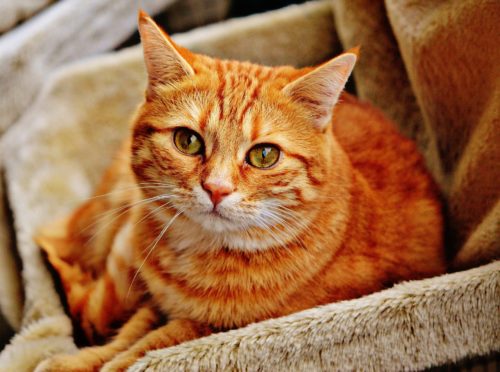
If your cat is slowing down, or having difficulty going up or down stairs or jumping up onto or down from surfaces, they may have feline arthritis. You can learn more about spotting the signs of feline arthritis in our recent article.
Arthritis is a common and painful condition, with nearly 40% of all cats showing clinical signs. If you suspect your cat has arthritis, it is important to seek advice from your veterinary surgeon. Once diagnosed, arthritis pain can be managed in the majority of cats. There are a variety of treatment options available including oral medications, monthly injections, laser therapy and diet/nutritional supplements, which the vet will discuss.
Although there is no cure for arthritis, there are things you can do easily at home to help your cat continue to enjoy their home and remain comfortable.
Modifying your home to help your cat get around
Just like in humans, cats with arthritis may find some physical movements painful. Joints commonly affected with arthritis in the cat are the elbows, hips and knees. Cats will bear a lot of weight on these joints when they jump up and down onto surfaces and go up or down stairs, and so cats with arthritis can find these movements painful.
There are many things you can easily do at home to help your arthritic cat access their usual spots.
• Your cat has four main resources they need: food, water, somewhere to toilet and somewhere to sleep. If there are stairs in your house, ensure your cat can access these resources without having to use the stairs. This means placing a set of resources upstairs and a set downstairs.
• Adding a ramp to enable your cat to walk up onto surfaces such as their bed or their favourite sleeping spot, means they don’t have to try to jump up to access these spots.
• Does your cat have a litter tray indoors? If so, make sure they can easily access it. Having at least one side of the litter tray at a lower level makes it easier for your cat to get inside. Consider using a larger litter tray as it makes it easier for your cat to adopt the correct posture to toilet comfortably. Setting up another litter tray in a different location to their usual one will make it easier for your cat to reach the tray wherever they are in your house.
• Even if your cat doesn’t normally use a litter tray indoors, it is worth considering setting one up just in case they need it. Arthritic cats will find it more difficult to use a cat flap etc and so they may become increasingly reluctant to go outside to toilet.
• Slippery surfaces can be difficult to negotiate, things like vinyl or hardwood
floors. Place a rug or a rubber mat along the floor so your cat can safely cross
without injuring themselves.
Caring for a cat with arthritis
As well as modifying your home to make it more friendly for your arthritic cat, there are some additional things you can do to ensure your cat is happy and healthy.
Cats with arthritis may find it difficult to groom themselves, so, if they will allow, you can gently brush or groom them daily to help prevent their fur getting matted. Bear in mind your cat’s joints may be a bit sore so go slowly at first and let them guide you on whether it is comfortable for them. If your cat’s fur is already matted, please contact us for advice.
Your cat may also find it difficult to use their usual scratch post and as a result their claws can become overgrown; our nurses can trim your cats claws regularly so keep in touch with them to do this.
Lastly, cats with arthritis still want to hunt and play, albeit a little slower than before. Continue to play with your cat for a few minutes two to three times a day. This keeps their mind active and will fend off problem behaviours that may occur as a result of not being able to hunt freely outside.
